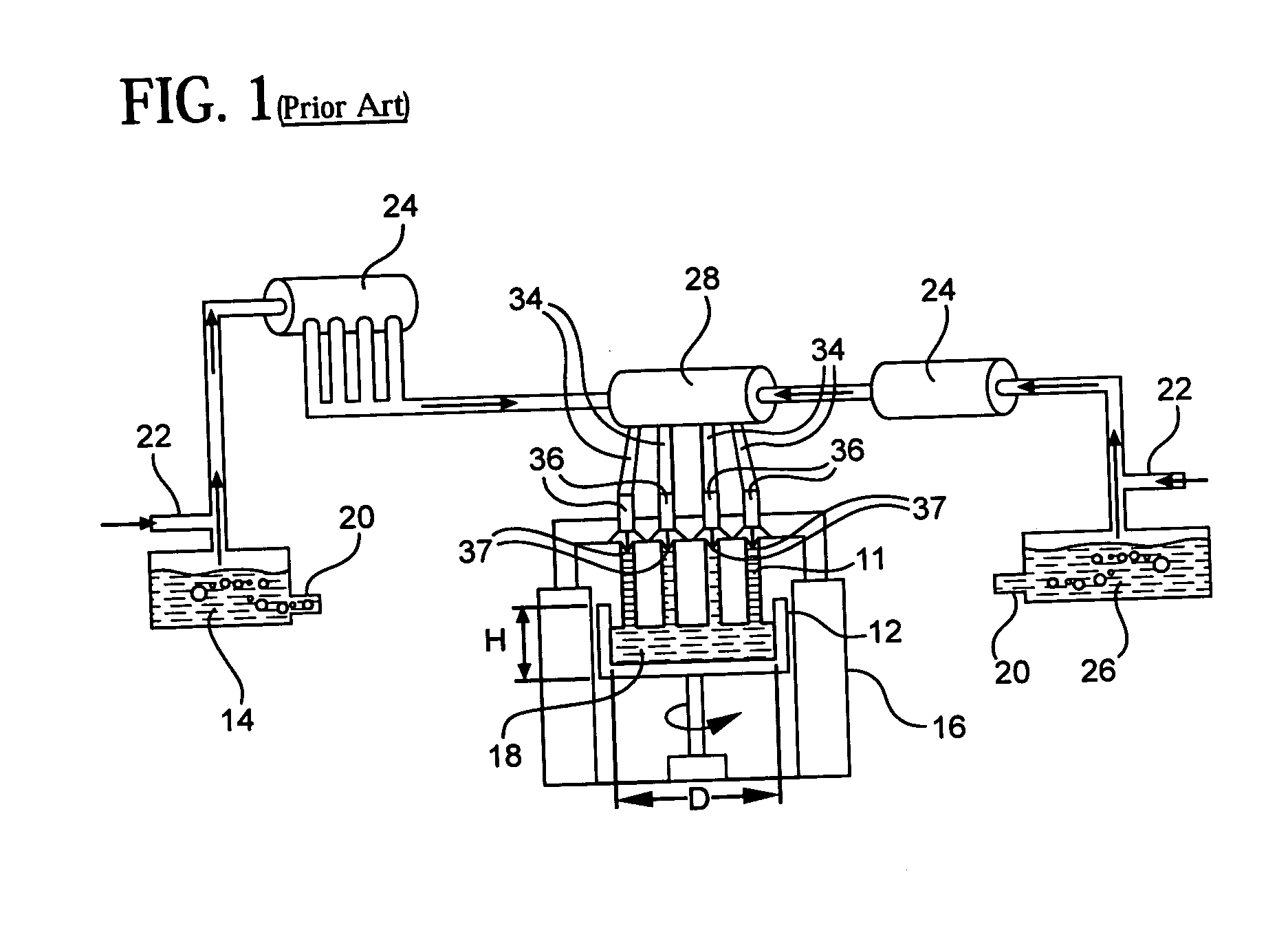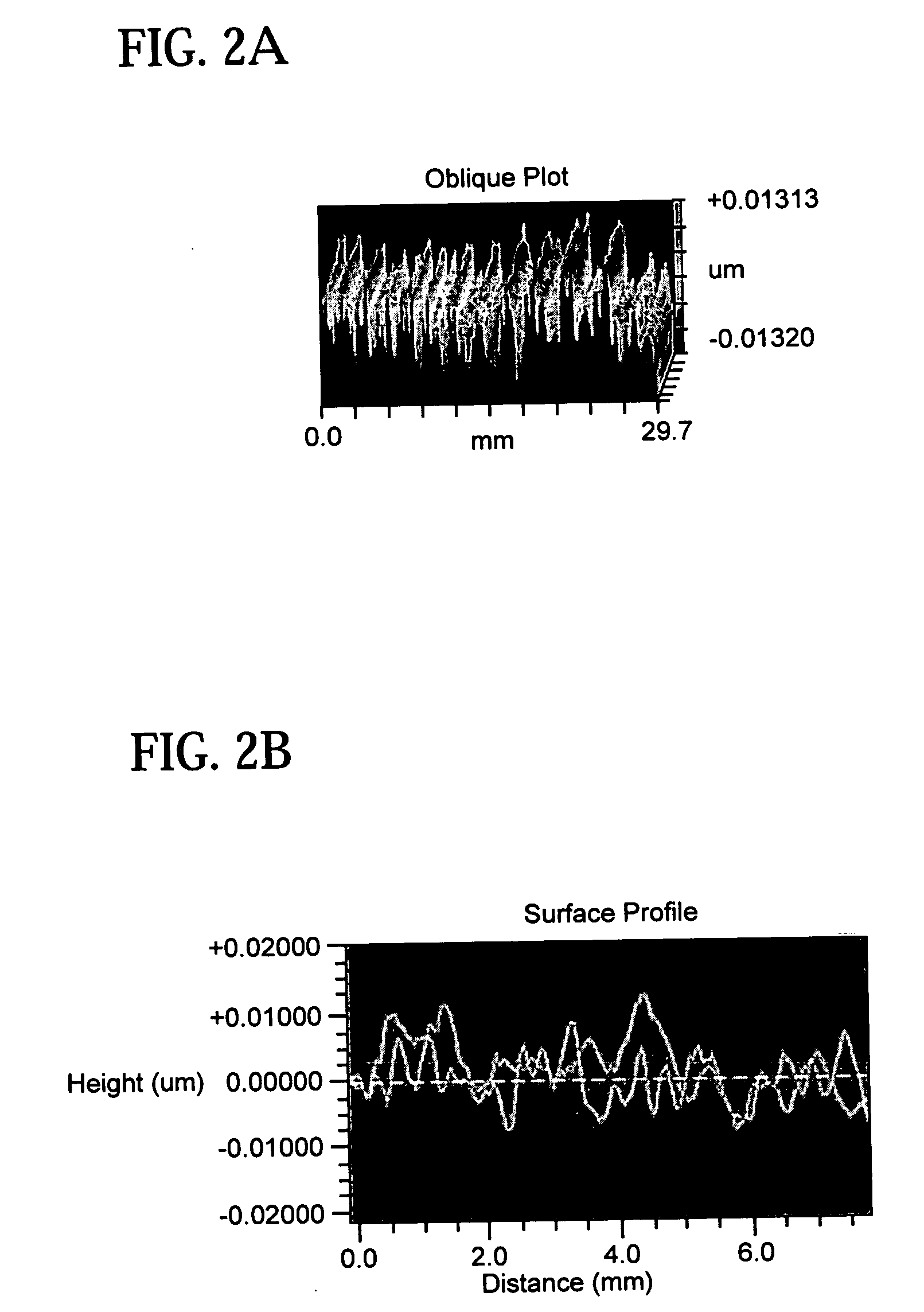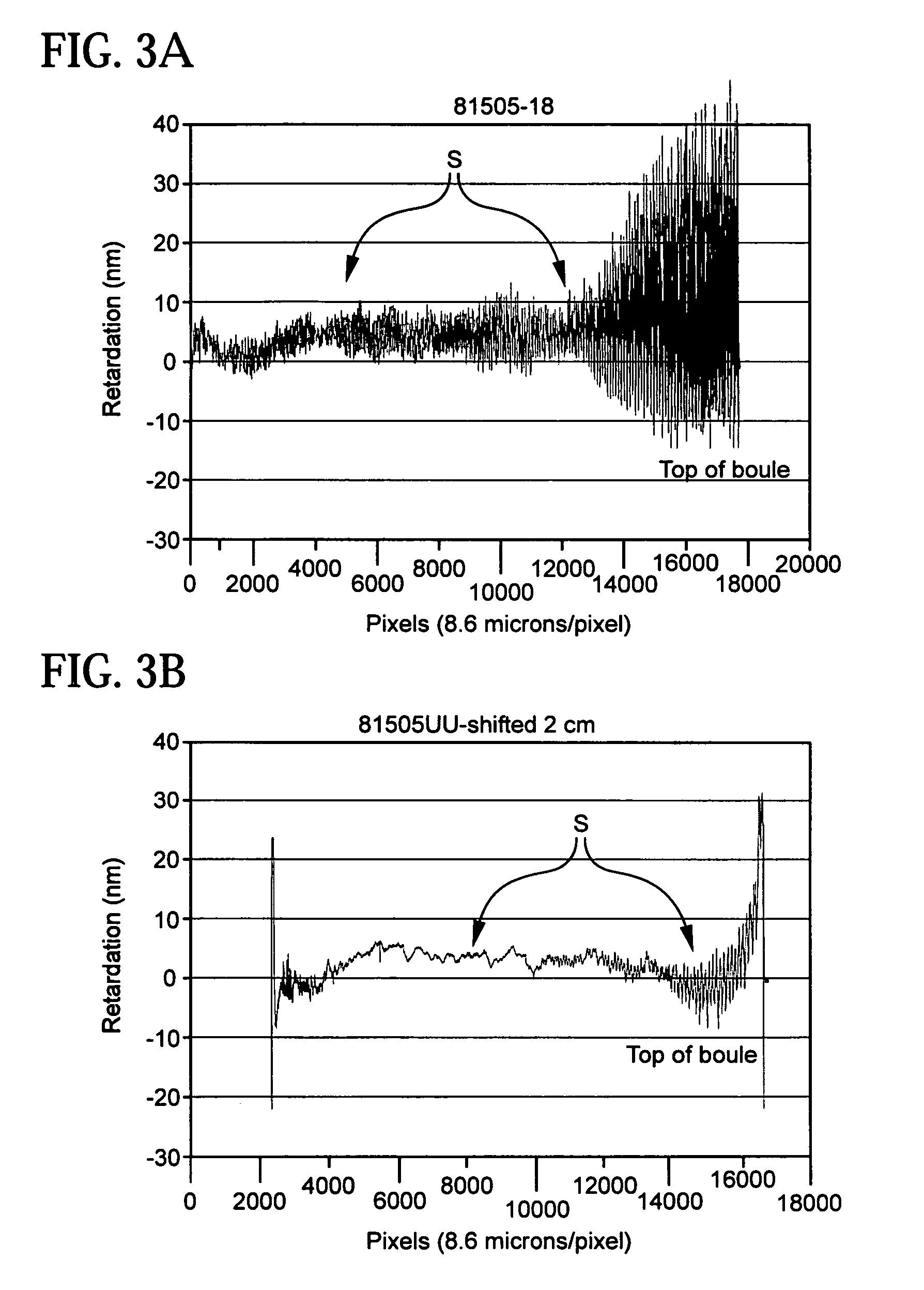Reduced striae low expansion glass and elements, and a method for making same
a technology of low expansion glass and striae, applied in the field of reduced striae low expansion glass and elements, can solve the problems of inability to economically manufacture mirror elements that can withstand, and inability to reduce the cost of manufacturing mirror elements in this wavelength range, so as to reduce the time for oscillation patterns
- Summary
- Abstract
- Description
- Claims
- Application Information
AI Technical Summary
Benefits of technology
Problems solved by technology
Method used
Image
Examples
example 1
[0030] Referring to the apparatus described in FIG. 1 herein, a titania-containing silica glass boule was manufactured using a high purity silicon-containing feedstock or precursor 14 and a high purity titanium-containing feedstock or precursor 26. The feedstock or precursor materials are typically siloxanes, alkoxides and tetrachlorides containing titanium or silicon. Siloxanes and alkoxides of silicon and titanium are preferred. One particular commonly used silicon-containing feedstock material is octamethylcyclotetrasiloxane, and one particular commonly used titanium-containing feedstock material is titanium isopropoxide, both of which were used herein. An inert bubbler gas 20 such as nitrogen was bubbled through feedstocks 14 and 26, to produce mixtures containing the feedstock vapors and carrier gas. An inert carrier gas 22 such as nitrogen was combined with the silicon feedstock vapor and bubbler gas mixture and with the titanium feedstock vapor and bubbler gas mixture to prev...
example 2
[0040] A glass boule is prepared according to Example 1, except that during the preparation of the boule the values for ω1, ω2 and ω3 used in the manufacture of the silica-titania boule were each greater than 5 rpm as taught by U.S. 2004 / 0027555, and the values for ω1, ω2 and ω3 during heat treatment are 1.71018 rpm, 3.63418 rpm and 4.162 rpm, respectively. The resulting boule is heat treated at a temperature above 1600° C. for a selected time to reduce the striae in the boule. Preferably the boule is heated at a temperature in the range of 1600-1700 for a time in the range 72-96 hours. In additional embodiments of this method the values for ω1, ω2 and ω3 used in the manufacture of the silica-titania boule were each greater than 5 rpm during the heat treatment of the boule according to the present invention to reduce striae.
[0041] When practicing striae reduction according to the invention, the cost effective way to reduce striae in a glass boule will be to hold the entire boule at...
example 3
[0043] In another aspect, the invention is directed to a low expansion glass product having significantly reduced striae and a method for making the product. In particular, the invention results in a low expansion glass product with significantly reduced striae that can be made into optical elements that have extremely low levels of mid-spatial frequency surface roughness. This is achieved by controlling specific aspects of the boule motion in the furnace to yield a low expansion glass. In the discussion that follows Corning ULE® low expansion glass is used as the exemplary glass. However, the method described can be used to manufacture any low expansion glass.
[0044] Heat treatment, as described above, of a low expansion glass such as ULE has been shown to significantly reduce cyclic compositional variations which occur during the deposition process. In addition, it has been shown that the extent of striae reduction is directly related to the time and temperature of heat treatment ...
PUM
| Property | Measurement | Unit |
|---|---|---|
| Temperature | aaaaa | aaaaa |
| Temperature | aaaaa | aaaaa |
| Temperature | aaaaa | aaaaa |
Abstract
Description
Claims
Application Information
 Login to View More
Login to View More - R&D
- Intellectual Property
- Life Sciences
- Materials
- Tech Scout
- Unparalleled Data Quality
- Higher Quality Content
- 60% Fewer Hallucinations
Browse by: Latest US Patents, China's latest patents, Technical Efficacy Thesaurus, Application Domain, Technology Topic, Popular Technical Reports.
© 2025 PatSnap. All rights reserved.Legal|Privacy policy|Modern Slavery Act Transparency Statement|Sitemap|About US| Contact US: help@patsnap.com



